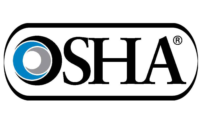A direct final rule issued by OSHA on May 4 “clarifies” several provisions of the agency’s beryllium standard for general industry, the agency announced in a press release. The provisions addressed in the rule concern processes, operations, or areas where workers may be exposed to materials containing less than 0.1 percent beryllium by weight; the definitions of the terms “beryllium work area,” “emergency,” “dermal contact,” and “beryllium contamination;” disposal and recycling; and dermal exposure to materials that contain at least 0.1 percent beryllium by weight. The rule will become effective on July 4, 2018, unless the agency receives “significant adverse comments” by June 4.
The beryllium standard for general industry was published in January 2017, along with standards for construction and shipyards. The standards reduced the permissible exposure limit for beryllium to 0.2 μg/m3 averaged over eight hours from the previous PEL of 2 μg/m3, and adopted a new short-term exposure limit for beryllium of 2 μg/m3 over a 15-minute sampling period. The May 4 direct final rule does not affect the new PEL and STEL.
OSHA has delayed enforcement of the beryllium standards several times. Prior to publication of the direct final rule, enforcement was scheduled to begin May 11. In a March 2, 2018 memo to regional administrators, OSHA’s Directorate of Enforcement Programs attributed the delay to settlement negotiations with several parties that had filed legal challenges to the standards.
Source; American Industrial Hygiene Assocation www.aiha.org
Direct final rule clarifies beryllium standard

